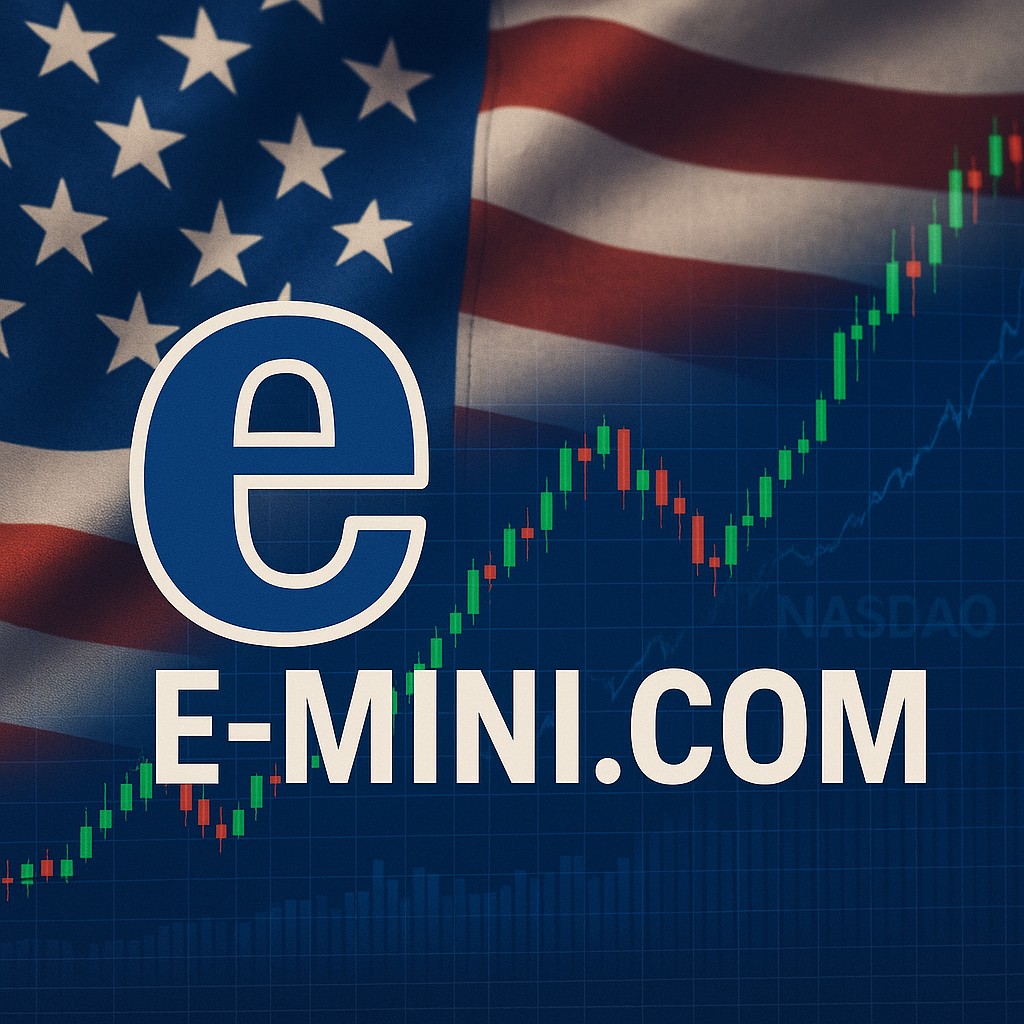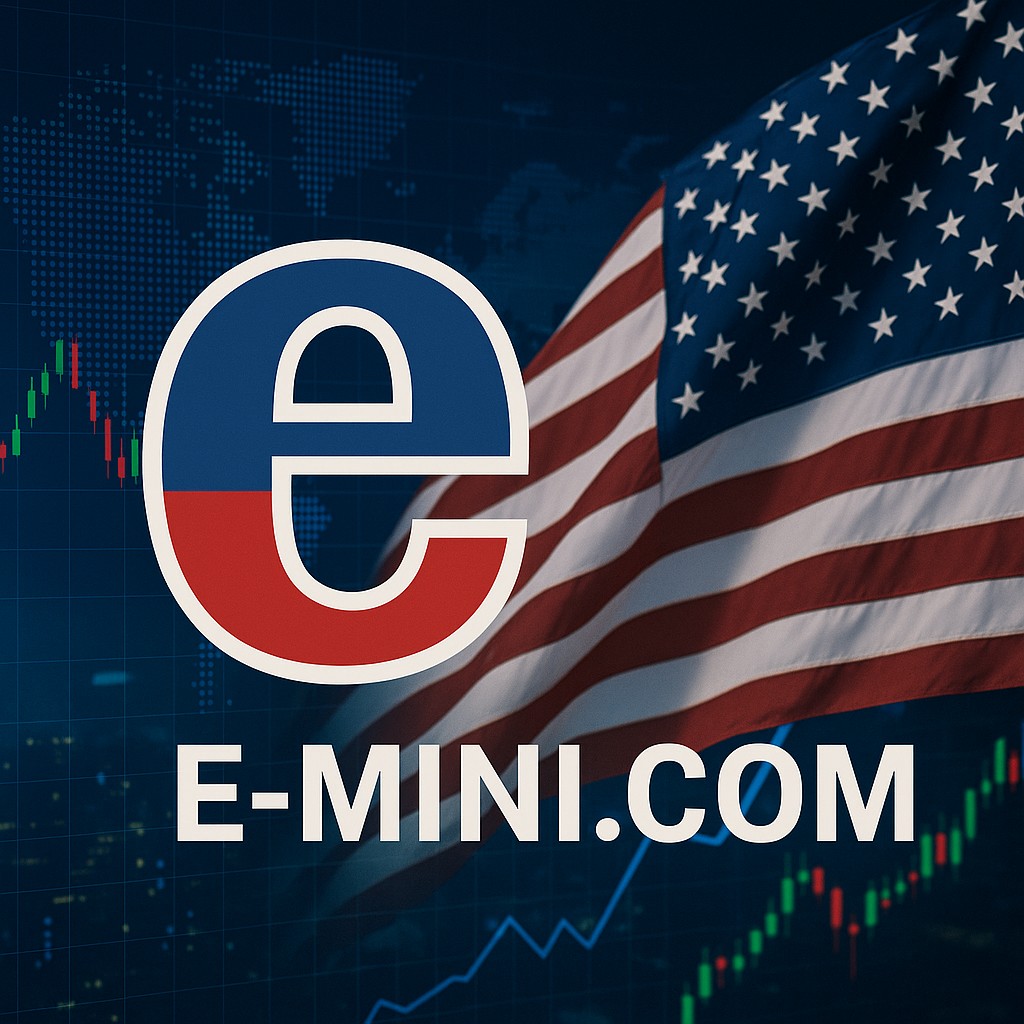E-Mini futures contracts, commonly referred to as e minis, have become one of the most widely traded derivatives in the futures market. Their popularity stems from their accessibility, liquidity, and versatility, attracting various types of market participants, including institutional traders, hedgers, and retail traders. Introduced by the Chicago Mercantile Exchange (CME) in 1997, e mini futures have transformed the landscape of futures trading by providing a more affordable and accessible way for traders to engage in the market compared to their full-sized counterparts.
In this article, we will explore the key reasons behind the popularity of e mini futures, their usefulness to different types of traders (institutional, hedgers, and retail), the concept of the e mini tic, and the future outlook for e mini futures trading.
What are E Mini Futures?
An e mini future is a smaller-sized futures contract designed to make futures trading more accessible to a broader audience. The most popular of these contracts is the E-Mini S&P 500, which is tied to the S&P 500 index and is one-fifth the size of the regular S&P 500 futures contract. This smaller contract size has enabled traders with less capital to engage in markets that were once dominated by larger institutional players.
E minis are available for various indices, including the NASDAQ-100, Dow Jones Industrial Average, and Russell 2000, in addition to commodities such as gold and crude oil. The smaller size of these contracts makes them a popular choice for traders seeking flexibility in their positions.
Why Are E-Mini Futures Contracts Popular?
E mini futures contracts have become a staple for market participants for several reasons:
- Liquidity
Liquidity is one of the most critical factors driving the popularity of e minis. Since these contracts are tied to major indices like the S&P 500, they attract a large number of market participants, including institutional traders, retail traders, and algorithmic trading systems. The high level of activity ensures that traders can enter and exit positions quickly without facing significant price slippage. This liquidity makes e mini futures trading especially appealing for day traders and scalpers who seek quick profits from small price movements.
- Accessibility for Retail Traders
The smaller contract size of e minis lowers the financial barrier to entry. For example, while a standard S&P 500 futures contract may require substantial margin requirements, the E-Mini S&P 500 requires significantly less. This makes it possible for retail traders with smaller accounts to participate in the market. Additionally, e mini futures are available for trading almost 24 hours a day, allowing retail traders across the globe to trade at times that suit their schedules.
- Versatility
E minis are not limited to index futures. There are e mini futures available for a wide range of asset classes, including commodities, interest rates, and currencies. This versatility makes them attractive to traders with diverse strategies. Whether a trader is looking to hedge a portfolio or speculate on market movements, e mini future trading provides a flexible solution.
- Lower Costs and Commissions
Compared to standard futures contracts, e minis often come with lower commissions and exchange fees. This makes them a more cost-effective solution for traders, particularly those who engage in high-frequency trading or have smaller accounts.
E Mini Tic: Understanding Price Movement
In futures trading, a “tick” represents the smallest possible price movement for a given contract. For e mini futures, the tick size varies depending on the contract. For instance, the E-Mini S&P 500 futures contract has a tick size of 0.25 index points, with each tick representing a value of $12.50.
The concept of an e mini tic is crucial for traders as it helps them understand the minimum price change and the potential profits or losses they may incur from even the smallest price movements. E mini tics are particularly important for day traders and scalpers who rely on small, frequent price movements to achieve their profit targets. The standard tick size, combined with the liquidity of e minis, makes it an ideal contract for these traders.
For example, if a trader buys an e mini contract at 4,000.00 and the price moves to 4,000.25, that 0.25 movement represents one tick, translating into a $12.50 gain or loss, depending on the direction of the trade.
E Mini Futures and Institutional Traders
Institutional traders, including hedge funds, pension funds, and proprietary trading firms, are significant players in the e mini futures trading market. These traders typically have large portfolios and need efficient ways to hedge risk or gain exposure to specific market segments.
- Hedging Portfolio Risk
For institutional traders, e minis serve as an efficient hedging tool. For instance, a portfolio manager who holds a large number of stocks in the S&P 500 can use E-Mini S&P 500 futures to hedge against a market downturn. By selling e mini futures, the manager can offset potential losses in the stock portfolio if the index declines.
- Leveraged Exposure
Institutional traders also use e mini futures to gain leveraged exposure to market movements without having to directly purchase the underlying assets. Since futures contracts only require a margin deposit, institutional traders can control large positions with relatively low capital outlay, making e mini future trading an efficient use of capital.
- Algorithmic and High-Frequency Trading
Given the high liquidity and continuous trading hours of e minis, they are also favored by algorithmic and high-frequency trading firms. The consistent and predictable behavior of e mini tics is particularly conducive to the strategies employed by these traders, allowing them to capitalize on small price movements and market inefficiencies.
E Mini Futures and Hedgers
Hedgers are another critical group that benefits from e mini futures trading. Companies, pension funds, and other entities often use futures contracts to mitigate risk and protect themselves from adverse price movements in the market.
- Risk Management for Companies
For companies that are exposed to market fluctuations, e mini futures provide a convenient way to manage risk. For example, a company that relies on exports may hedge against currency fluctuations using e mini futures tied to foreign exchange rates. Similarly, firms exposed to interest rate changes can use e mini interest rate futures to hedge against the risk of rising rates.
- Protecting Investment Portfolios
Pension funds and large institutional investors also use e minis to protect the value of their portfolios. By shorting e mini futures, they can offset potential losses in their holdings during market downturns. The smaller contract size of e minis allows for more precise hedging compared to larger futures contracts.
E Mini Futures and Retail Traders
For retail traders, e minis have been a game-changer in the world of futures trading. Historically, futures trading was largely the domain of institutional players due to the high capital requirements. However, e mini future trading has made it possible for individual traders to participate in these markets.
- Lower Barriers to Entry
One of the primary reasons e minis are so popular with retail traders is the lower barrier to entry. The smaller contract size and lower margin requirements enable traders with limited capital to trade these contracts. This accessibility has democratized futures trading and attracted a large number of retail traders.
- Leverage and Flexibility
Retail traders are often drawn to the leverage that e mini futures provide. By controlling a larger position with a smaller amount of capital, retail traders can amplify their potential gains (though this also increases the risk of losses). The variety of e mini futures across different asset classes also provides flexibility for retail traders to diversify their trading strategies. - Day Trading and Scalping
For retail day traders and scalpers, e minis are an ideal instrument. The high liquidity, narrow spreads, and small tick sizes allow traders to capitalize on short-term market movements. The availability of e mini tic data also helps traders make informed decisions about when to enter and exit trades based on precise price movements.
The Future of E Mini Futures Trading
As financial markets continue to evolve, e mini futures trading is likely to remain a cornerstone of both institutional and retail trading strategies. Several trends are shaping the future of this market:
Increased Use of Technology
The rise of algorithmic and high-frequency trading is already playing a significant role in the e mini market, and this trend is expected to continue. Advances in artificial intelligence and machine learning are likely to further enhance trading strategies that rely on e mini tics and other granular market data.
Globalization of Futures Trading
As more retail traders from around the world gain access to electronic trading platforms, the demand for e minis is likely to grow. The near 24-hour trading cycle of e mini futures makes them particularly attractive to international traders who may want to trade outside of regular U.S. market hours.
Expansion of Product Offerings
The CME and other exchanges are continually innovating, offering new types of e mini futures tied to different asset classes. As financial markets evolve and new products are developed, traders can expect even more opportunities to engage in e mini future trading across a broader spectrum of assets.
Regulatory Changes
Regulatory changes in the futures market may also impact e mini futures trading in the future. As regulators continue to focus on risk management, transparency, and market stability, traders may face new requirements related to margin, reporting, and risk management. However, these changes are unlikely to diminish the appeal of e minis, which have become deeply ingrained in the fabric of global financial markets.
E mini futures contracts have established themselves as one of the most popular and versatile trading instruments available today. Their liquidity, accessibility, and adaptability make them a favorite among institutional traders, hedgers, and retail traders alike. The introduction of e mini tic pricing has further enhanced the precision with which traders can execute strategies and manage risk.
As technology continues to advance and global markets become increasingly interconnected, e mini futures trading is poised for further growth. The combination of flexibility, leverage, and liquidity ensures that e minis will remain a vital tool for traders and hedgers in the years to come.
To open a futures account with E-Mini.com, please click here
Ready to start trading futures? Call US 1(800)454-9572 – Int’l (310)859-9572email info@cannontrading.com and speak to one of our experienced, Series-3 licensed futures brokers and start your futures trading journey with E-Mini.com today.
Disclaimer – Trading Futures, Options on Futures, and retail off-exchange foreign currency transactions involves substantial risk of loss and is not suitable for all investors. Past performance is not indicative of future results. You should carefully consider whether trading is suitable for you in light of your circumstances, knowledge, and financial resources. You may lose all or more of your initial investment. Opinions, market data, and recommendations are subject to change at any time.
Important: Trading commodity futures and options involves a substantial risk of loss. The recommendations contained in this writing are of opinion only and do not guarantee any profits. This writing is for educational purposes. Past performances are not necessarily indicative of future results.
**This article has been generated with the help of AI Technology. It has been modified from the original draft for accuracy and compliance.
***@cannontrading on all socials.





